Corals are starting to bleach as global ocean temperatures hit record highs
Water temperatures in the 90s off Florida in July are alarming, a NOAA coral scientist writes. Scientists in several North American countries have already spotted coral bleaching off their coasts.
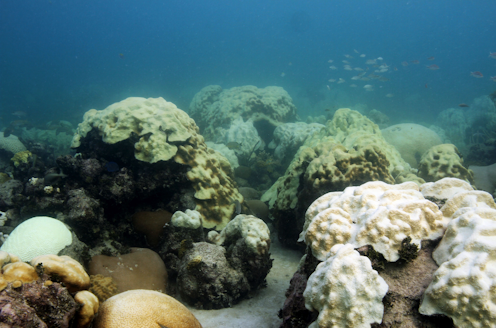
The water off South Florida is over 90 degrees Fahrenheit (32 Celsius) in mid-July, and scientists are already seeing signs of coral bleaching off Central and South America. Particularly concerning is how early in the summer we are seeing these high ocean temperatures. If the extreme heat persists, it could have dire consequences for coral reefs.
Just like humans, corals can handle some degree of stress, but the longer it lasts, the more harm it can do. Corals can’t move to cooler areas when water temperatures rise to dangerous levels. They are stuck in it. For those that are particularly sensitive to temperature stress, that can be devastating.
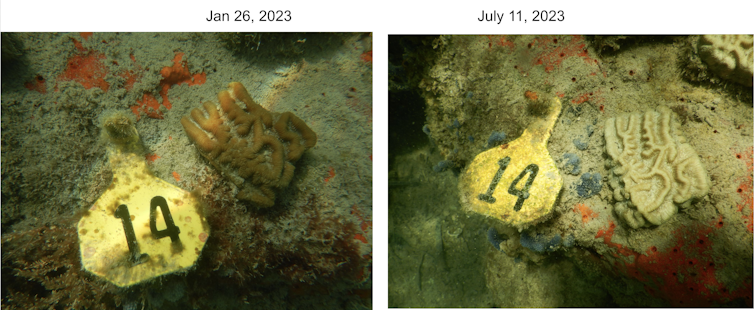
I lead the Coral Program at the National Oceanic and Atmospheric Administration’s Atlantic Oceanographic and Meteorological Lab in Miami, Florida. Healthy coral reef ecosystems are important for humans in numerous ways. Unfortunately, marine heat waves are becoming more common and more extreme, with potentially devastating consequences for reefs around the world that are already in a fragile state.
Why coral reefs matter to everyone
Coral reefs are hot spots of biodiversity. They are often referred to as the rainforests of the sea because they are home to the highest concentrations of species in the ocean.
Healthy reefs are vibrant ecosystems that support fish and fisheries, which in turn support economies and food for millions of people. Additionally, they provide billions of dollars in economic activity every year through tourism, particularly in places like the Florida Keys, where people go to scuba dive, snorkel, fish and experience the natural beauty of coral reefs.
If that isn’t enough, reefs also protect shorelines, beaches and billions of dollars in coastal infrastructure by buffering wave energy, particularly during storms and hurricanes.
But corals are quite sensitive to warming water. They host a microscopic symbiotic algae called zooxanthella that photosynthesizes just like plants, providing food to the coral. When the surrounding waters get too warm for too long, the zooxanthellae leave the coral, and the coral can turn pale or white – a process known as bleaching.
If corals stay bleached, they can become energetically compromised and ultimately die.
When corals die or their growth slows, these beautiful, complex reef habitats start disappearing and can eventually erode to sand. A recent paper by John Morris, a scientist in my lab in Florida, shows that around 70% of reefs are now net erosional in the Florida Keys, meaning they are losing more habitat than they build.
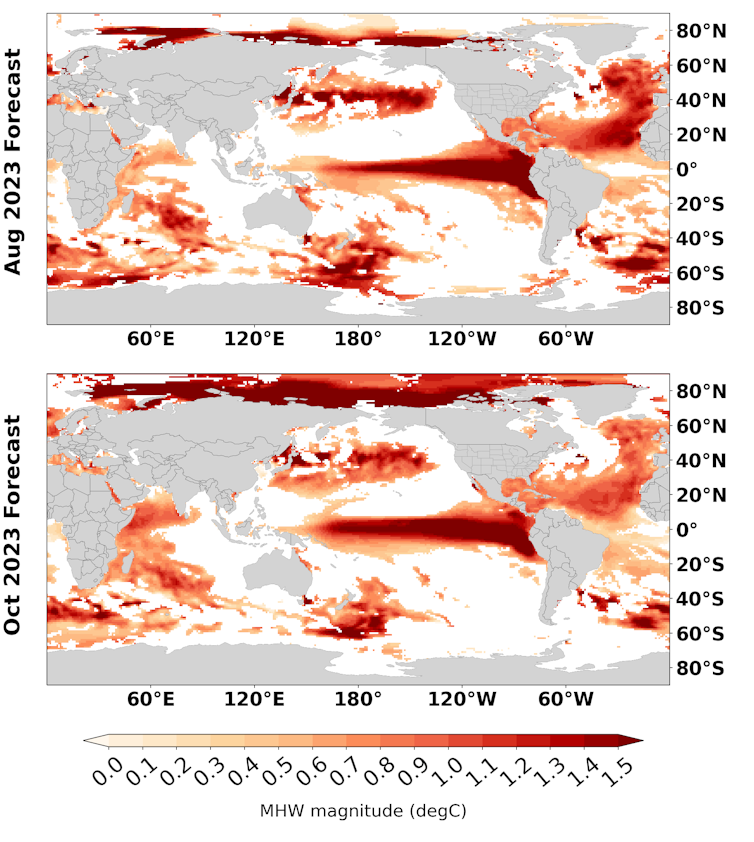
Unfortunately, these critical coral reef habitats are in decline around the world because of extreme bleaching events, disease and numerous other human-caused stressors. In the Florida Keys, coral cover has decline by about 90% over the past several decades.
Coral bleaching in 2023
In the Port of Miami, where we have found particularly resilient coral communities, a doctoral candidate in my lab, Allyson DeMerlis, documented the first coral bleaching of her experimentally outplanted corals on July 11, 2023.
Other scientists we work with have reported coral bleaching off of Colombia, El Salvador, Costa Rica and Mexico in the eastern Pacific, as well as along the Caribbean coasts of Panama, Mexico and Belize.
We have yet to see widespread coral death associated with this particular marine heat wave, so it is possible the corals could recover if sea surface temperatures cool down soon. However, global sea surface temperatures are at record highs, and large parts of the Atlantic and eastern Pacific are under bleaching alerts. At this point, the evidence points to the potential for a very negative outcome.
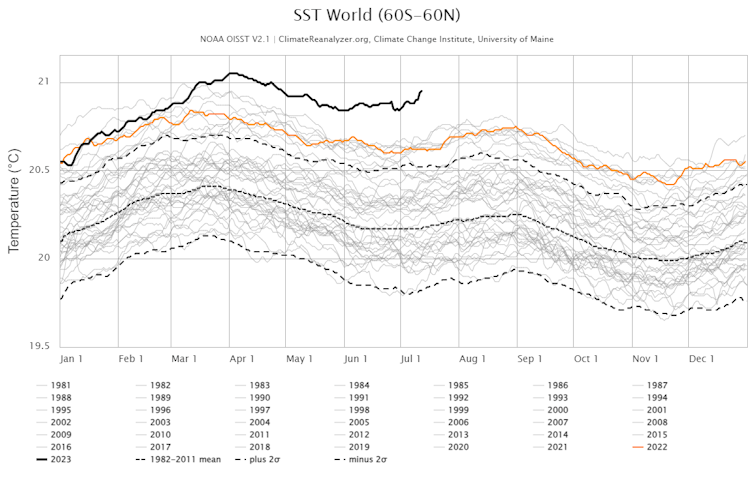
El Niño is contributing to the problem this year, but the longer-term trends of rising ocean heat are driven by global warming fueled by human activities.
To put that into context, a paper by NOAA scientist Derek Manzello showed that in the Florida Keys, the number of days per year in which water temperatures were higher than 90 F (32 C) had increased by more than 2,500% in the two decades following the mid-1990s relative to the prior 20 years. That is a remarkable increase in the number of days that corals are experiencing particularly stressful warm water.
What can we do to protect corals?
First, we cannot give up on corals.
Alice Webb, a coral reef scientist working with our group, recently published a study based on years of our research in the Florida Keys. She modeled reef habitat persistence under climate, restoration and adaptation scenarios and found that protecting reefs is going to take everything – active restoration of reefs, helping corals acclimate or adapt to changing temperatures, and, importantly, human curbing of greenhouse gas emissions.
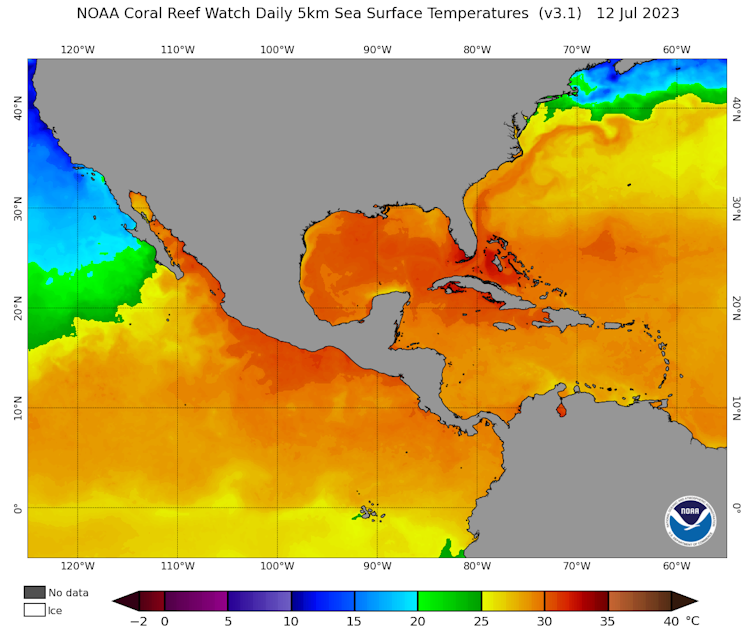
Major restoration efforts are underway in the Florida Keys as part of the NOAA-led Mission Iconic Reefs. We are also assessing how different coral individuals perform under stress, hoping to identify those that are particularly stress-tolerant by combing through the massive amounts of data from restoration projects and coral nurseries.
We are also evaluating stress-hardening techniques. For example, in tide pools, corals are exposed to large swings in temperature over short periods, making them more resilient to subsequent thermal stress events. We are exploring whether it’s possible to replicate that natural process in the lab, before corals are planted onto reefs, to better prepare them for stressful summers in the wild.
Coral bleaching on a large scale has really been documented only since the early 1980s. When I talk to people who have been fishing and diving in the Florida Keys since before I was born, they have amazing stories of how vibrant the reefs used to be. They know firsthand how bad things have become because they have lived it.
There isn’t currently a single silver-bullet solution, but ignoring the harm being done is not an option. There is simply too much at stake.
Ian Enochs receives funding from NOAA.
Read These Next
Who thinks Republicans will suffer in the 2026 midterms? Republican members of Congress
The president’s party almost always loses seats in the midterms. More than two dozen Republican House…
Resolve to network at your employer’s next ‘offsite’ – research shows these retreats actually help f
Because they can help you get to know more of your co-workers, offsites may build the kind of trust…
West Antarctica’s history of rapid melting foretells sudden shifts in continent’s ‘catastrophic’ geo
A picture of what West Antarctica looked like when its ice sheet melted in the past can offer insight…






